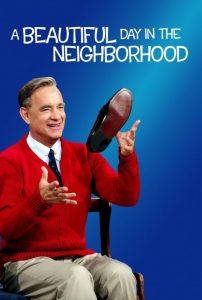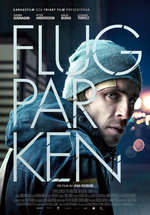Early on in Marielle Heller’s A Beautiful Day in the Neighbourhood, it’s tempting to put yourself in Lloyd Vogel’s shoes and wander ‘What is Mr Rogers hiding?’ Is there some kind of sinister intent behind his charming smile, endless positivity, and wholesome persona?
There’s no doubt that such an interrogation would make for an intriguing film, but it’s clear that’s not the film Heller is interested in making. Instead, A Beautiful Day in the Neighbourhood is the complete antidote to that attitude, of expecting the worst in people, and is instead a pleasantly heart-warming way to usher in the New Year.
The ever-reliable Tom Hanks is the affable Fred Rogers, a children’s host whose contagious TV persona matches the person he is off stage. But as the Oscar nominations suggest, Hanks’ character is merely a supporting actor in the storyline, which centres on Esquire journalist Lloyd Vogel (Matthew Rhys), a critical-eyed features writer far more comfortable writing exposés than puff pieces about children’s television entertainers. Still healing from the wounds inflicted during a fight with his father at his sister’s wedding, Lloyd is the perfect candidate for Rogers’s philosophies on life and unique brand of informal counselling.
 Beautiful Day deals in the micro, by telling a simple story about forgiveness between two broken characters. But by limiting itself in terms of plot, writers Noah Harpster, Micah Fitzerman-Blue and Tom Junod carve out the space to go into depth, allowing Lloyd to share intimate one-on-one moments with Mr Rogers, his wife Andrea (Susan Kelechi Watson), and his father Jerry (Chris Cooper).
Beautiful Day deals in the micro, by telling a simple story about forgiveness between two broken characters. But by limiting itself in terms of plot, writers Noah Harpster, Micah Fitzerman-Blue and Tom Junod carve out the space to go into depth, allowing Lloyd to share intimate one-on-one moments with Mr Rogers, his wife Andrea (Susan Kelechi Watson), and his father Jerry (Chris Cooper).
The camera leans right into each of the actors’ faces during these moments, allowing the audience to notice even the subtlest emotions of the film’s leading players. It’s a simple yet powerful piece of cinematography that highlights the strengths of each actor, particularly its leading duo. Furthermore, the universally sound advice of Mr Rogers has a powerful impact beyond just Lloyd and his family; throughout the film, Hanks’s eyes appear to be pointing beyond the screen and straight into those of the cinema audience.
Indeed, Heller is liberal in letting the fourth wall to be broken, allowing Hanks to at times be both a character and a narrator. 4:3 televised scenes of Mr Rogers’ program are interspersed almost seamlessly with widescreen shots of the ‘real world’. At times, this adds a surprising surrealist dimension to a film that could have easily taken a more straight-edged approach. This technique may seem risky, but it’s highly effective; not only does it fit the flow of the narrative, but these scenes enhance the film’s storytelling. Similarly, the film is supported with a solid soundtrack; every song choice is right on the money.
Beautiful Day’s story and moral messages may not be the most groundbreaking, but it’s a film that seldom takes a wrong step. Moreover, its positive energy is a welcome ingredient to popular culture, which could always use a few more personalities like Mr Rogers.
A Beautiful Day in the Neighbourhood is in cinemas from 23rd January through Sony Pictures.





